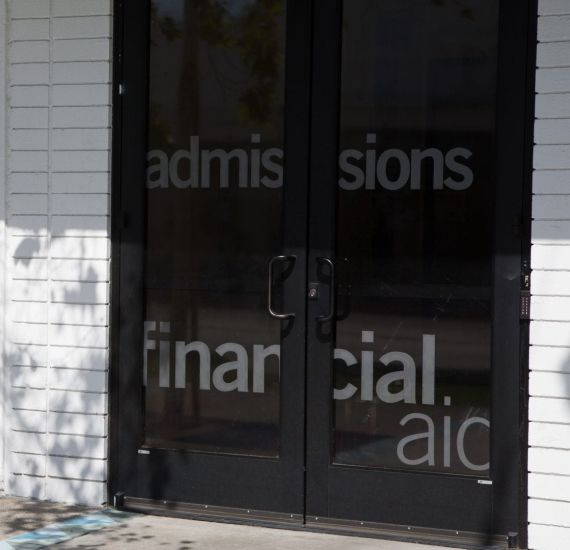While it’s great that the federal government, the state of California, private donors and others are willing to help you finance your education, it is very important that you understand that there are a variety of conditions attached to the aid you receive.
Perhaps the single most important item for you to know is this: in most cases, you are awarded grants, loans, scholarships and other forms of financial assistance for the purpose of completing classes taken toward earning a degree. This means that most forms of financial assistance you receive from the federal government (for example, Federal Pell Grants, Federal undergraduate/graduate student loans), from the State of California (for example, Cal Grant) or from private or university benefactors carry substantial penalties if you enroll in courses but don’t finish those courses.
Remember this: financial aid is awarded to students so that they may complete courses, not so that they may attempt courses. This is an important and significant distinction. Should you enroll in courses but fail to successfully complete the course, you could become personally financially responsible for the costs of your tuition and fees, plus be required to pay back the loans, grants or scholarships that you received. You should never withdraw from any course or stop attending any course without first consulting with the Financial Aid Office and your academic advisor.
We know that these rules can seem complicated, so the following highlights are intended to help you understand the basic requirements of accepting financial aid. Please be sure to review the NSAD Financial Aid Terms and Conditions which you must agree to on Anthology as a precondition to accepting any financial aid offer. You will also want to make yourself familiar with the terms and conditions of any loan, grant or scholarship that you choose to accept. Hotlinks are also provided in the descriptions that follow to help you connect to the full policies that are applicable.
Official and Unofficial Withdrawals
Students who drop classes on or before the census date may have their aid adjusted. In addition, faculty at NSAD are requested to report academic engagement by a published date (i.e., the census date). NSAD faculty are required to take official attendance throughout the quarter, faculty can report academic engagement by taking attendance or by a documented academic activity. If a student is reported as ‘Stopped Attending’ or ‘Never attended’ in all enrolled courses within a quarter, the student is considered to be “unofficially” withdrawn from the university. Withdrawals may have serious impact on the student’s financial aid status.
- Students who receive the Federal Pell Grant, Federal SEOG, or Federal Direct Loans must complete more than 60% of the quarter to earn 100% of their aid. If you are officially or unofficially withdrawn before completing more than 60% of the term, then NSAD must perform a Federal Return of Title IV Funds Calculation. The Return Calculation is based on the premise that students “earn” federal financial aid for each calendar day that they attend classes. This means that the University may be required to return all or part of your aid to the federal government if you withdraw before completing your classes. You will also still be responsible for paying any applicable tuition and fees for the courses you attempted but did not complete. Anytime a Return Calculation is performed, the student is likely to owe a balance to the University from funds that must be returned. It is very important that you attend your courses! To review the Return Calculation Policy and examples, click here.
- In addition, if you officially or unofficially drop below half-time status, NSAD will notify your loan servicer through enrollment reporting that you are no longer enrolled at least half-time. Your six month grace period for loan repayment will begin on the date of dropping below half-time status. You will be sent an email from NSAD requesting that you complete Loan Exit Counseling at studentaid.gov and make preparations to begin repayment of your loan.
- Finally, withdrawing from all your classes has a negative impact on your eligibility to receive financial aid in the future. The federal government requires that every student must maintain Financial Aid Satisfactory Academic Progress Standards to retain financial aid eligibility.
Financial Aid Satisfactory Academic Progress (SAP) requirement
Federal regulations require that we establish and apply reasonable standards of satisfactory academic progress (SAP) for the purpose of awarding financial assistance under the Title IV programs authorized by the Higher Education Act of 1965 as amended (34 CFR 668.34). NSAD complies with this requirement by monitoring each student’s “overall combined” cumulative grade point average (GPA), “overall combined” pass-rate (percentage of credit hours passed divided by credit hours attempted), and “overall” maximum time frame for completion of the student’s program of study.
This policy is applicable to Federal Title IV Programs, State Programs inclusive of the Cal Grant, and various NSAD Scholarship Programs.
Please read and be sure you understand our full SAP policy.
In general, students must meet the Qualitative (GPA), Pace (progression toward degree), and Maximum Timeframe financial aid standards to remain in good standing and be eligible for financial aid (as long as all other eligibility requirements are met).
If placed on Financial Aid Suspension, students are ineligible to receive aid until they meet the above three standards, or an appeal is approved. There are limited options for appealing the status of financial aid suspension.
NOTE: Students should also be aware of the difference between a financial aid suspension based on the Financial Aid Satisfactory Academic Progress Policy and an academic suspension which is based solely on grades and GPA (refer to the Academic Standing policies in the Undergraduate & Graduate Catalogs). A financial aid suspension means the student can still attend NSAD; however, the student will not receive financial aid. An academic suspension means the student cannot attend NSAD for the length of the suspension even if eligible for financial aid. These are two different suspensions, and there are two different appeal processes that are independent of each other.
Financial Aid Appeals (please attached the SAP appeal form, it’s in the zip file)
The vast majority of NSAD students receive some measure of financial assistance from a combination of the federal government, the state of California, NSAD and private donors. It is very important that you understand that the aid you receive is given for the purpose of completing each course and making efficient progress toward completing your degree. Federal and state regulations, as well as campus policies, will require that we monitor the satisfactory academic progress of every student who receives financial aid. Failing to achieve acceptable grades, failing to make timely progress toward your degree, establishing a pattern of enrolling in but not finishing classes, or failing to meet any other requirements of your financial aid award may result in you becoming ineligible to receive further aid.
At the same time, most federal, state and other aid policies recognize that there can be exceptional circumstances that prevent a student from being able to successfully meet all terms of their financial aid awards. For those exceptional circumstances, there may be a specific appeals process that will allow you to explain your extenuating circumstance and regain your aid. Based on the source of aid, more than one appeal may be required. In all cases, documented extenuating circumstances must exist.
Satisfactory Academic Progress Appeals
NOTE: Students should also be aware of the difference between a financial aid suspension based on the Financial Aid Satisfactory Academic Progress Policy and an academic suspension which is based solely on grades and GPA (refer to the Academic Standing policies in the Undergraduate & Graduate Catalogs). A financial aid suspension means the student can still attend NSAD; however, the student will not receive financial aid. An academic suspension means the student cannot attend NSAD for the length of the suspension even if eligible for financial aid. These are two different suspensions, and there are different appeal processes that are independent of each other.
Federal, state and other regulations require that we establish and apply reasonable standards of satisfactory academic progress (SAP) for the purpose of awarding financial assistance under Federal Title IV programs (including grants, work-study, and loans), Cal Grant, and various NSAD scholarship programs. NSAD complies with this requirement by monitoring each student’s “overall combined” cumulative grade point average (GPA), “overall combined” pace (percentage of credit hours passed divided by credit hours attempted), and “overall” maximum time frame for completion of the student’s program of study.
Please read and be sure you understand our full Financial Ad SAP policy.
In general, students should be aware that there are three specific standards related to staying in Good Standing to receive financial aid.
- You must minimally be meeting one of the following GPAs:
- Undergraduate students must maintain a 2.0 “overall combined” GPA
- Graduate students at the Master’s or Specialist level must maintain a 3.0 “overall combined” GPA
- You must have an “overall combined” pace of 67% (percentage of credit hours passed divided by credit hours attempted)
- Federal law allows students to receive Title IV assistance up to 150% of the program’s published length. For most undergraduates, this means that you may receive financial aid only up to 180 attempted credit hours. Students become ineligible for financial aid once it is mathematically impossible to graduate within the maximum timeframe.
There are limited options for appealing the status of financial aid suspension based on lack of satisfactory academic progress. You should be aware that, depending on the timing of when the appeal is submitted, the appeal may not be reviewed prior to when registration fees are due for the upcoming quarter. You may need to be prepared to pay registration fees while your appeal is being reviewed. If the appeal is approved after the quarter begins, the student will be considered for financial aid, if otherwise eligible. However, there is no guarantee that any appeal will be approved, and if you have paid your registration fees out-of-pocket for the term, you may not be eligible for a refund.
Appealing Financial Aid SAP due to Qualitative (GPA) and / or Pace (pass rate) Standards
Students who are suspended from financial aid due to Qualitative (GPA) and / or Pace (pass rate) Standards. To appeal the suspension, you must submit the following documents. In person appeals are not permitted.
- NSAD Financial Aid Satisfactory Academic Progress Appeal Form located on the forms page.
- A personal statement that explains extenuating circumstance(s) for each quarter that needs to be addressed. Please email the Financial Aid Office to determine which quarters your appeal must address. Students may submit an appeal on the basis of extenuating circumstances which were not anticipated prior to when all relevant quarters started.
- The personal statement should also address how the extenuating circumstance has been resolved to the extent that it should not create an ongoing barrier to meeting all SAP requirements.
- Supporting documentation pertinent for all quarters required to be addressed. Examples include, but are not limited to, a physician’s statement on official letterhead, copy of a death certificate, or signed statements from a counselor or clergy member attesting to the extenuating circumstance.
If your appeal is approved, you will be placed on a financial aid academic plan and will be eligible to continue receiving financial aid so long as you meet the conditions of the plan. However, if the Financial Aid Appeals Committee denies your appeal, you will remain on financial aid suspension. To regain eligibility for financial aid, you will have to take classes and successfully meet both the Qualitative (GPA) and / or Pace (pass rate) Standards. The decision of the Financial Aid Appeals Committee is final and cannot be further appealed for one year unless the student satisfactorily completes additional credits for further consideration.
In a small number of cases, the finding of the Financial Aid Appeals Committee may be that the appeal, as presented, has merit but lacks sufficient documentation. In those limited cases, you will be afforded the opportunity to re-appeal to the NSAD Financial Aid Appeals Committee. You will be notified through campus email if you are granted the option to re-appeal.
Re-appealing for additional consideration will be allowed only if you are able to present new documentation, not previously submitted for consideration in your initial appeal. Re-appealing does not imply a guarantee of a positive outcome.
To re-appeal the suspension to the NSAD Financial Aid Appeals Committee, you must submit the following documents. In-person appeals are not permitted.
- Supporting documentation, not previously submitted, pertinent to the quarter(s) in which you failed to make adequate academic progress. Examples include a physician’s statement on official letterhead, copy of a death certificate, or signed statements from a counselor or clergy member attesting to the extenuating circumstance.
- If denied, the decision of the Financial Aid Appeals Committee is final and cannot be further appealed for one year unless the student satisfactorily completes additional credits for further consideration.
Appealing SAP based on Maximum Timeframe Standard
Students who are suspended from financial aid due to either not graduating within the allowed Maximum Timeframe or who cannot mathematically graduate within the Maximum Timeframe can appeal. To inquire about appealing, please contact the Financial Aid Office at financialaid@newschoolarch.edu








 619-684-8800
619-684-8800


